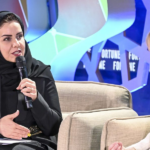But what the gaming industry in the Middle East is missing is more women working in the field—and female gamers.
“To have more females in this industry will affect the economy,” Abbas added, saying it would create a “ripple effect” that could make a difference in any country.
Having more women in the gaming industry would also result in games that are less toxic and more ethical, Abbas said, participating in a panel titled “Ensuring That Women Win at Gaming.” Many gaming companies struggle with toxic gaming among players, including bullying and punishments. She also called out some examples of unethical game design—for instance, games in which players lose a reward or achievement if they don’t log on for a while.
“When you have more females involved in the narrative and the game design, it will also make a nontoxic, ethical design,” Abbas said.
The committee helps ensure “it’s not somebody writing the voice of somebody else that they have not walked in the shoes of or necessarily understand, or almost comes across as a caricature of a culture,” Lee said.
Lee’s team designed the first Native American character for a Marvel game, the Navajo Spider Weaver, she said. Marvel “blessed that character,” Lee said, and Scopely was allowed to put it in the game.
“That’s just one tiny example, but these things are happening every day, increasingly in gaming, but probably not fast enough,” Lee said. “The more we can do this … the better the outcome is going to be, and the better audience reach you’re going to have ultimately.”









